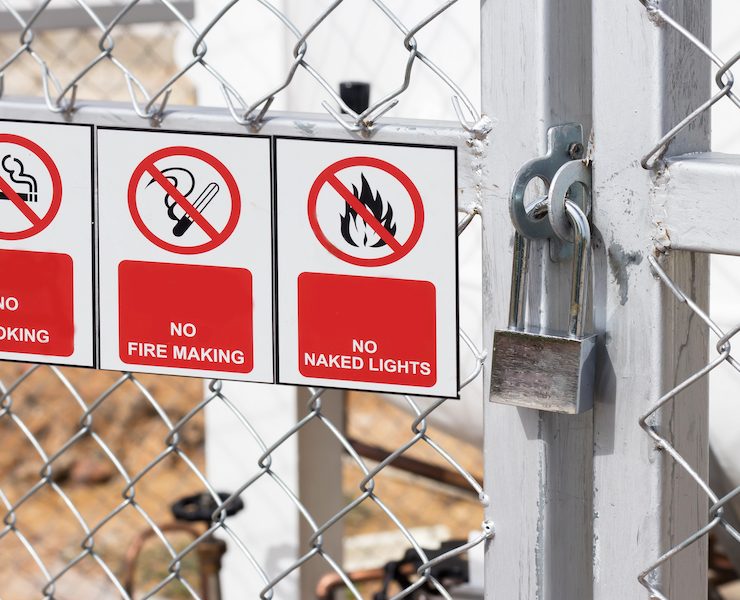The Importance of an Effective Oil Analysis Program in Reducing Changeovers and Extending Equipment Life

View the complete article here.
Many factors come into play when you are evaluating lubricant options for your fleet. These factors include original equipment manufacturers’ recommendations and approvals, quality, intended application or use, operating conditions, required performance, oil life and price. But there is another very important factor that is often overlooked — how to evaluate lubricant effectiveness once it’s in use.
We’ll take a deep dive into the importance of an oil analysis program and highlight best practices you can apply as you establish your program. If you already have an oil analysis program in place, these best practices are a great benchmark to ensure your program is primed for success.
Benefits of an Oil Analysis Program
Choosing a quality lubricant that meets your needs and is well-suited for your application is essential. However, that is just the first step. By enrolling in an oil analysis program, you can expect:
- Detailed analysis of the lubricant’s performance
- Potential cost savings from oil changes timed to oil condition monitoring rather than intervals
- Maximum performance out of your lubricant and equipment
- Proactivity instead of a reactive emergency
- Fewer repairs and less equipment downtime
- Better overall value from your oil investment
Oil analysis offers a snapshot into how your machinery and your lubricant is operating at a given time. It also allows you to compare samples from previous tests so you can make necessary adjustments to keep your equipment operating at peak performance and to plan for maintenance in advance.
When you have thousands of parts moving fast and working hard, keeping them running smoothly with the right lubricant is smart business. By knowing the condition of the oil in your system and how it is performing, you can adjust changeover intervals as necessary. Oil that is in good condition and working properly can be kept in the system longer, reducing replacement costs and equipment downtime.
What is Oil Analysis?
At its most basic, oil analysis is the laboratory analysis of a lubricant’s condition measured by key properties, suspended contaminants and wear debris. This analysis is performed by capturing oil samples during routine predictive maintenance to provide meaningful and accurate information on lubricant and machine condition. By tracking oil analysis sample results over the life of a particular machine, trends can be established which can help extend equipment life and eliminate costly repairs.
Who Performs Oil Analysis?
Approaches to oil analysis vary widely – from no samples and evaluation to ad hoc sampling to best in class standardized and routine sampling. While the sampling process is straightforward, the data analysis is relatively complex. For this reason, data is best analyzed by lubrication engineers and tribologists, who specialize in studying lubrication and the effect of wear on machinery.

Best Practices for Developing an Effective Oil Analysis Program
Not all oil analysis programs are created equal. Approach your oil analysis the same way you would a business partnership.
- Proactive Oil Analysis on a Regular and Consistent Basis
As you evaluate your oil analysis partner, chose one that is going to lead the charge (so you don’t have to). They should develop a clear plan for lubrication sampling intervals and how often (monthly, quarterly) samples should be submitted for analysis. It’s also important that sampling and shipping instructions are clearly understood since poor sampling protocol can lead to poor oil analysis results. You should expect them to remind you of testing needs and deadlines for sample collections, and once a sample is analyzed, to interpret and communicate the results and offer any recommendations to ensure lubricant optimization.
- Use Independent Laboratories for Oil Testing and Analysis
Some oil manufacturers use third-party (or independent) labs to perform their analysis while other manufacturers offer in-house analysis services. We suggest seeking a manufacturer that uses an independent lab. For starters, the lab does not have a vested interest in the results. You have better authenticity with an independent third party. Secondly, you get results at the same time as the manufacturer, which means quicker access to your results.
- Request an In-depth Analysis
You want a manufacturer that serves as consultant versus a vendor. The report is very important, but the interpretation of the data by an oil expert coupled with corrective actions is really what can differentiate a manufacturer. You want an industry expert that is actively engaged in analyzing and communicating the results in a way that you and your team can understand.
Ask to see a sample analysis and make sure it tests for the following:
- Viscosity @ 40°C and 100°C which indicates that the fluid has stayed in grade
- Total Acid Number – shows and monitors useful life of fluid
- Water – indicates water contamination
- Elemental Content – indicates petroleum contamination, additive content and wear elements
- Particle Count – shows particle and dirt contamination within the oil and informs when filters need to be changed
Look for comprehensive reports that offer a deeper level of analysis in the above categories. Lastly, expect reports that provide an overview of the results— including any recommendations to ensure lubricant and machinery optimization.
- Don’t Be Afraid to Ask About Costs
Oil analysis is a great tool and if it prevents excessive wear or equipment breakdown and maintenance, then it is even more valuable. But how much does oil analysis cost – is it affordable? The costs can vary from manufacturer to manufacturer and laboratory to laboratory.
Some manufacturers, like RSC Bio Solutions, offer low-cost or no-cost oil analysis as a value-added service to their customers. With this in mind, there is no reason not to start this type of program, one that will allow you to gain important data for your fleet, react more proactively, reduce unplanned downtime and save money with a minimal upfront investment in lubricants.
- Act on the Data
The return on investment in your oil analysis program is directly proportional to the actions taken based on the oil sample results. Failing to take appropriate maintenance actions when the oil sample clearly indicates a situation that requires a correction reduces the ROI of your lubrication program.
Most sample report recommendations are straightforward and are designed to consider the cost versus benefit of the maintenance action. Before carrying out a sample report recommendation, ensure that it is practical and cost-effective. It is important to be sure that your maintenance staff understands the requirements and responsibilities and has the authority and support to carry out recommendations. Where it appears significant changes are needed, consult with the analyst to discuss the recommendation and potential alternatives.
View the complete article here.
Why is an oil analysis program important for equipment maintenance?
An oil analysis program provides a detailed analysis of lubricant performance, helps determine optimal changeover intervals, and allows proactive maintenance to extend equipment life, reduce downtime, and maximize performance.
What should be included in a comprehensive oil analysis report?
A comprehensive oil analysis report should include viscosity measurements, Total Acid Number (TAN), water contamination levels, elemental content indicating petroleum contamination, and particle count, offering a deeper level of analysis for effective lubricant and machinery optimization.

















